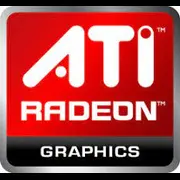ATI Radeon HD 4850

ATI Radeon HD 4850 in 2025: A Retrospective and Practical Tips
Introduction
The ATI Radeon HD 4850, released in 2008, marked an important milestone in GPU history. Despite its age, it still captures the interest of enthusiasts and collectors. In this article, we will examine its features through the lens of modern technology, assess its potential in 2025, and provide practical recommendations.
1. Architecture and Key Features
RV770 Architecture: The Power Foundation
The HD 4850 is built on the RV770 architecture (part of the R700 family) with a 55 nm manufacturing process. It features 800 stream processors and 40 texture units. For 2008, this was a breakthrough: the card supported DirectX 10.1, Shader Model 4.1, and CrossFireX technology for combining multiple GPUs.
Lack of Modern Features
There is no talk of ray tracing (RTX) or DLSS—these technologies emerged a decade later. Even AMD's FidelityFX (from 2019) is unavailable for the HD 4850. However, at the time, it stood out for its support of ATI Avivo HD for video enhancement and PowerPlay for optimizing power consumption.
2. Memory: Modest Specs in the Era of GDDR6X
Type and Size
The HD 4850 was equipped with 512 MB or 1 GB of GDDR3 with a 256-bit bus. Its bandwidth was 64 GB/s (memory frequency of 993 MHz). In comparison, modern entry-level cards like the NVIDIA RTX 3050 use 8 GB of GDDR6 with bandwidths of up to 224 GB/s.
Impact on Performance
Even in 2025, 512 MB of VRAM is critically low. Most games require at least 4 GB to run at low settings in 1080p. The HD 4850 is only suitable for older titles or 2D tasks.
3. Gaming Performance: Nostalgia for the 2000s
FPS Examples in Classic Games
- Half-Life 2 (2004): 150+ FPS at 1080p on maximum settings.
- Crysis (2007): 25-30 FPS at 1080p on high settings (due to the game's notoriously high demands).
- World of Warcraft (2008): 60+ FPS at 1080p.
Modern Titles: The Realities of 2025
Even indie games like Hollow Knight: Silksong or Celeste 2 (a working title) may encounter issues due to limited memory and lack of support for DirectX 12 Ultimate. At 1080p on minimal settings, some lightweight titles may achieve 30-40 FPS, but stability is not guaranteed.
Ray Tracing: Zero Support
The HD 4850 is incompatible with hardware ray tracing. Even software solutions like FSR 1.0 are unavailable for it.
4. Professional Tasks: Limits of Capability
Video Editing and 3D Modeling
For basic editing in DaVinci Resolve or Adobe Premiere Pro, the card can handle SD resolution rendering, but 4K or even 1080p will cause lag. In 3D applications like Blender, it is limited due to lack of support for modern APIs (OpenCL 1.1 vs. the current 3.0).
Scientific Calculations
NVIDIA's CUDA cores are unmatched here, and with its support for OpenCL 1.1, the HD 4850 is outdated even for educational tasks.
5. Power Consumption and Heat Generation
TDP and PSU Requirements
The card has a TDP of 110 W. A power supply of 450 W is sufficient for a build with the HD 4850, but it's important to consider age: older PSUs may not meet modern efficiency standards (such as 80 Plus Bronze).
Cooling and Cases
The stock cooler is quite noisy (up to 40 dB). It is recommended to use a case with good ventilation (2-3 fans) and to replace the thermal paste. Modern compact cases (Mini-ITX) may cause overheating.
6. Comparison with Competitors
2008: The Battle with NVIDIA
The main competitor was the GeForce 9800 GTX (128 cores, 512 MB GDDR3). The HD 4850 won in energy efficiency and price ($199 vs. $329 for NVIDIA).
2025: Past Competitors
Among modern equivalents are integrated GPUs, such as the AMD Ryzen 5 8600G (Radeon 760M). These solutions offer comparable or superior performance with a TDP of 65 W and support for current technologies.
7. Practical Tips
Power Supply and Compatibility
- Choose a PSU with a 6-pin PCIe connector and an 80 Plus certification.
- Ensure that the motherboard supports PCIe 2.0 x16 (it is compatible with PCIe 3.0/4.0, but speed may be limited).
Drivers and OS
Official driver support has ended. For Windows 10/11, use modified community drivers (for example, from enthusiasts on forums). Linux users can rely on open solutions like RadeonSI.
8. Pros and Cons
Pros:
- Low price on the second-hand market ($20-50).
- Historical value for collectors.
- Support for classic games and OS (Windows XP/Vista).
Cons:
- No support for DirectX 12 and Vulkan.
- High noise and heat levels.
- Incompatibility with modern monitors (HDMI 1.3, absence of DisplayPort).
9. Conclusion: Who Should Consider the HD 4850?
This graphics card is suitable for:
1. Retro PC enthusiasts building systems from the 2000s.
2. Collectors appreciating the history of hardware.
3. Owners of old PCs needing to replace a burnt-out GPU without upgrading the entire system.
For gaming in 2025, professional tasks, or working with modern software, the HD 4850 is not suitable. Its purpose lies in nostalgia for the era when Crysis was a benchmark for power, and Half-Life 2 won the hearts of gamers.
Postscript
The ATI Radeon HD 4850 serves as a reminder of a time when every megabyte of VRAM and every frame per second was highly valued. In 2025, it remains an artifact of technological evolution—a modest, yet important step towards today’s GPUs.
Basic
Memory Specifications
Theoretical Performance
Miscellaneous
Benchmarks
Compared to Other GPU
Share in social media
Or Link To Us
<a href="https://cputronic.com/en/gpu/ati-radeon-hd-4850" target="_blank">ATI Radeon HD 4850</a>